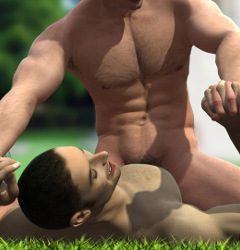The Gay Games

The Gay Games go beyond a simple sports competition. The Gay Games are a safe place for LGBTQ athletes to compete without the fear of discrimination.
In 1982, Olympic decathlete Tom Waddell founded the Games. They were based on three principles: participation, inclusion, and personal best. Today, these values still drive the event.
The Gay Games and their origins
San Francisco’s first Gay Games were held on 28th August 1982. They were founded by Tom Waddell, an Olympic decathlete who was also an activist and AIDS sufferer. He wanted to create an event that would allow people of all sexualities to compete in the same style as the Olympics without promoting any political message. The Games were a great success, and they set the precedent for future events.
Waddell prohibited medal ceremonies and the tallying of medals, as well recording athletic records. He thought that athletes should celebrate their talents and not be pitted up against one another. He died of AIDS in 1988, but his legacy still lives on.
Now, every four years, athletes from all over the world meet for the quadrennial Gay Games. Athletes from all over the world meet every four years for the quadrennial Gay Games. This event demonstrates that the FGG values of participation, inclusion and personal excellence can inspire mainstream sport to be more inclusive.
The first Gay Games
Tom Waddell created the first Gay Games that were held in San Francisco in 1983. Waddell himself was a gay decathlete. He wanted to apply the ethos of the Olympics to an international competition for LGBT athletes and spectators.
The Games were a source of joy and accomplishment for the participants. The Games were a powerful statement against the AIDS crises that had ravaged communities. Many athletes took part in a Parade of Nations, where they wore red shirts, the symbol of AIDS awareness.
The Games demonstrated courage and solidarity despite the AIDS outbreak, and they inspired LGBT sports clubs. The Games continue every four years. They are a major sporting event for the LGBTQ communities. The organisers of the event strive to eliminate sexism, racism, ageism and homophobia from their programme and practices, as well as from their ethos and spirit. Each host city brings its own unique style to the Games.
The second Gay Games
The second Gay Games took place in 1990 in Vancouver, Canada. They included a range of sporting and cultural activities as well as a village festival. The games proved to be a great success and they continued growing as they spread around the globe.
The Federation of Gay Games’ (FGG) mission is to promote equality in sports and culture. Its three guiding principles include Participation, Inclusion, and Personal Best. Its mission is to make everyone feel safe, welcome and respected during the Games. The FGG also aims to encourage individuals with disabilities to participate.
Tom Waddell was the man who founded the first Gay Games. The goal of these games was gender equality. Inspired by American athletes Tommie Smith and John Carlos at the 1968 Olympics, Waddell hoped that the Games would inspire LGBTQ people to stand up against intolerance. The Games have grown in size, but gender equality has not always taken priority.
The third Gay Games
The Gay Games are a sports and cultural event that promotes the idea of diversity. The Games are for athletes of all ages and genders, regardless their sexual orientation or race, religion, ethnicity or political beliefs. They can also be open to those with disabilities.
The Games serve as a platform for LGBT athletes that otherwise wouldn’t be able participate in the regular professional men’s leagues. A same-sex figure skating team can perform in matching denim outfits to the tune of “Hopelessly Devoted to You.” Trans basketball stars from Uganda where homosexuality has been criminalized can also win with their team.
While the Games are continuing to evolve, it is not without its challenges. Organisers had to cut back on the Games scope in order for them to attract enough participants. Valencia in Spain, the host city of 2026, has similar problems. Organizers hope to bring the Games back to prominence in a way that is sustainable.
The fourth Gay Games
The Gay Games is now bigger and more diverse than ever before. The Gay Games is the largest cultural and sporting event in the world, organized by and for LGBT artists, athletes and other participants. It also serves as a platform that fosters community and activism within the LGBTQ community.
Contrary to the Olympics, everyone can compete in the Gay Games. Athletes need not be professional or skilled at their sport to compete. However, they must pay in order to compete. As well, activists are encouraged speak out against the discrimination that occurs at the Games. They can also work to make the World a more accepting environment for LGBTQ people.
These games, whether you’re searching for a fun dating sim game or an epic fantasy with LGBT themes at the forefront, are among the best. You can romance characters from any sexual orientation or gender in these games. Some even have poly relationships.




 Try not to cum
Try not to cum 3DXChat gay
3DXChat gay Gay Game
Gay Game 3D Gays
3D Gays Gay Harem
Gay Harem Nutaku Gay
Nutaku Gay